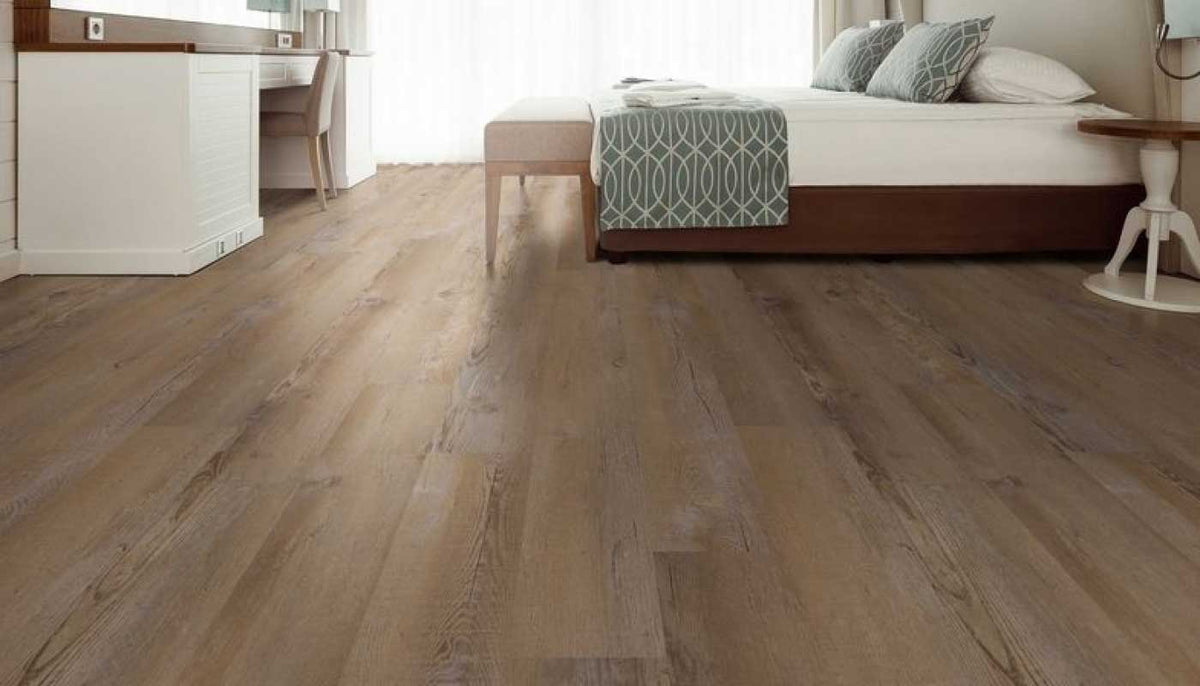
How to Clean Vinyl Flooring After Installation
|
|
Time to read 2 min
|
|
Time to read 2 min
When your vinyl flooring is totally installed, you may step back and experience a couple of things: First, you’ll probably awe at the work you’ve done and be proud of the final result. Second, you could look at the dust and glue that remains and lament the task still before you. However, just as installing vinyl flooring is pretty simple, so too is clearing the aftermath. Here are some tips on how to clean your new Vinyl Floor:
Depending on the method of installation, different types of vinyl flooring come with their own distinct cleaning challenges. If you used vinyl flooring products that did not have glueless click lock installation system or an adhesive back, meaning you had to apply glue yourself, excess amounts could leak to the surface. You might see glue between your seams and want to get rid of it – glue isn’t as pretty as your new floors are. Here’s how to safely remove glue so you don’t ding or dent your beautiful floors:
Gather proper tools: You’ll need a scraper, a squirt bottle and solution to get rid of that glue. The solution can be floor stripper or acetone-based nail polish remover. Acetone chemicals help loosen the glue. Other homeowners have even used mineral spirits to assist in cleanup.
Spray the floor: Put your stripping solution into a squirt water bottle, then spray a bit on the glue you want to remove. The spray bottle gives you control over the liquid. It’s always a good idea to spot test the solution on an inconspicuous section of your vinyl floor to avoid potential damage. If you want to be extra careful, you can pour some on a cloth and dab the glue patches. If you’re using a product specifically made for cleaning floors, make sure to read the manufacturer’s directions for mixing and usage.
Scrape carefully: After your chosen solution has sat for a few minutes (the solution you use will impact the time), grab your scraper. You’ll use it to remove the glue. Place the edge of the scraper against the glue and push it horizontally. Avoid applying downward pressure, as this can damage your new floors. You may have to push the handle a bit to get the glue to budge, though the cleaning solution should help.
Clean with water: After all the glue is removed from your floor, you should rinse the space with water. That way, your floor will be free of cleaning chemicals. You can dampen a cloth and wipe it over your tiles so you don’t have standing water. Finally, dry the ground with another towel. You can also do a full mop if you want – you may have to anyway after tracking dirt during the installation process.
Although you will have cleaned your room before installing vinyl flooring, you should clean Vinyl flooring afterward as well. Placing the product could stir up some dust. Getting rid of dirt is much easier than removing glue.
Sweep or vacuum: You can use a regular old broom to sweep away dust, but you may find vacuuming easier. Use a hose attachment that has bristles. That way, you won’t scratch your vinyl floors.
Mop: When working on your vinyl floor installation, you may have worn work boots and tracked mud on the ground. You can clean the surface with a mop. Most vinyl products are very water-resistant, so wet-mopping is OK to do on your new floor. Mix water with a household floor cleaner. Opt for a gentle product to keep your vinyl floors in good shape.
In the future, you can care for and clean your vinyl kitchen floor with a broom, vacuum or mop. Maintenance for this flooring product is very simple, which is why it’s so popular with homeowners.
Vinyl floor installation is easy compared to other products, so cleaning up should be a cinch.